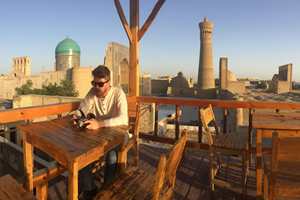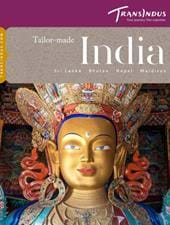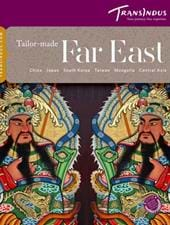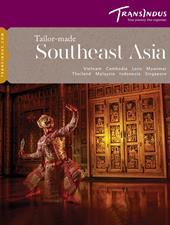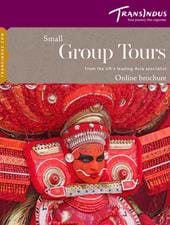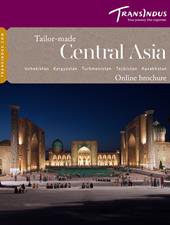Tailor-made Tour 15 days from £4995 per person
Places Visited: Tashkent, Khiva, Nukus, Darwaza, Ashgabat, Mary, Bukhara, Samarkand
Combining the highlights of Uzbekistan with those of neighbouring Turkmenistan, this itinerary is our recommended option for adventurous travellers wishing to experience the ruined cities of Merv and Konye-Urgench, as well as the medieval monuments of Samarkand, Bukhara and Khiva. It also includes a stay in Ashgabat – one of the world’s most extraordinary capitals.
As its name suggests, the trip takes you well away from the regular tourist routes. You’ll get visit the ancient fortresses of the Khorezm region and cross some wild tracts of the Karakum desert, hopping between oases that once formed stepping stones on the ancient Silk Road. It involves a few long journeys, and a night under canvas, but we think the effort more than worth it for the chance to experience some of Asia’s most atmospheric, far flung archeological sites and intriguing cities.
As with most of our tours, arts and crafts feature prominently. You’ll have opportunities to see silk carpets being woven, watch wood carvers in action, try your hand at traditional Uzbek pottery and listen to live music that would have been recognizable to members of the Timurid court six or more centuries ago.
Holiday Types
Cultural Holidays
Suggested itinerary
UK
Fly overnight from the UK to Tashkent.
Accommodation Options
Tashkent
On arrival in the Uzbek capital, you’ll be met at the airport by your local TransIndus representative and driven to your hotel for a one-night stay. Spend the rest of the morning recovering from the journey. Later, enjoy an afternoon of guided sightseeing in the north of the city.

After lunch at a traditional Uzbek restaurant, enjoy a gentle afternoon’s tour beginning at the Hast Imam complex in old Tashkent, whose handsome 14th-century mosques, tomb and madrasa today hold workshops for traditional crafts, as well as one of the world’s oldest Qurans. From there, head across town to the National Museum, home to some of Asia’s most sumptuous antique carpets, a collection of ancient suzani embroidered silk wall hangings and Buddhist figurines from the pre-Islamic Silk Road era.
Accommodation Options
Tashkent - Khiva
After breakfast, transfer to the airport for your flight to Urgench, springboard for the historic town of Khiva. Once you've checked in to your hotel, spend the remainder of the day visiting the principal sights of the old walled city, the Itchan-Kala, in the company of your guide.

Sumptuous tilework, painted ceilings, finely carved wood pillars and exquisite calligraphy adorn the remarkable ensemble of palaces and madrasas surviving in the Itchan Kala. Your guide will lead you through the highlights, starting at the Kunya-Arc palace, a complex of interlocking royal apartments and courtyards, some of which are adorned with breathtakingly intricate majolica tilework. You’ll have a chance to climb the city’s tallest building, the Islam Khoja Minaret, following a narrow flight of steps that corkscrews to a tiny viewing platform where a fabulous 360-degrees view over the surrounding rooftops is revealed. The nearby Jama Masjid is famed for its ancient, carved elm pillars, replicas of which are still produced in time-honoured fashion just around the corner in workshop occupying the site of a medieval madrassa.
Accommodation Options
Khiva
Spend the morning mopping up the remainder of Khiva’s sights, browsing the craft workshops and backstreet shops, and enjoying the lively atmosphere of the fresh produce market outside the city’s east gate. In the evening, venture across town to scale to the old walls, winding up at the Kunya Ark Palace for sunset.

A recommended stop on any tour of Khiva is a visit to the wood carving workshop of the Jumanijozov family, just around the corner from the Jama Masjid. In the atmospheric confines of a former walled madrasa, master carver Shavkat and his apprentices sculpt huge elm columns using designs and techniques little changed in centuries. They also create delightful picture frames that make ideal souvenirs!
Photographers will definitely wish to scale to old ramparts of the Itchan-Kala at sunset time for a marvellous view of the city’s exotic skyline. Another wonderful vista is the one from the observation tower of the Kunya Ark Palace, from where the green-glazed domes and mosaic-tile decoration adorning Khiva’s great monuments may be seen at their most resplendent.
Accommodation Options
Khiva - Nukus
Drive north across the Amu Darya (Oxus) Delta to visit two of a chain of ancient desert forts en route to Nukus, site of an extraordinary museum.

More than two millennia ago, a sophisticated irrigation system channelled melt water from the Pamirs into the Amu Darya (Oxus) Delta, a region known as the Khorezm, transforming the desert into a fertile oasis of lakes, reed beds, marshes and farmland. The lynchpins of this long lost civilization were a chain of mud-walled citadels, whose remains now rise from low sand hills an hour’s drive north of Urgench. Almost entirely forgotten but spellbindingly beautiful, two of the most spectacular are Toprak Kala and Ayaz Kala, which you’ll visit in the morning.
The ‘Karakalpak Museum of Arts’ in Nukus houses items unearthed on the sites, but most foreign visitors come to see its world-renowned collection of Surrealist, Cubist and Brutalist paintings. The horde was amassed in the 1950s and 1960s by the Kiev-born artist, Igor Vitalevich Savitsky, when Stalinist government was persecuting artists deemed ‘avant garde’.
Accommodation Options
Nukus - Darwaza
An early start today as you drive across south the Oxus Delta to the Uzbek-Turkmen border. Once the formalities are completed you’ll continue to the lost city of Konye-Urgench, then onwards across the Karakum Desert to spend the night near the extraordinary Darwaza gas crater.

On a southern tributary of the Amu Darya (Oxus) River, Konye-Urgench was an urban centre as long ago as the 5th century BC, but rose to prominence between the 11th and 16th centuries. Lying at a major crossroads on the old Silk Road, it attracted more than its fair share of invaders. Repeated massacres of the population devastated the city several times over, but it was a change in the course of the river that ultimately hastened the decline of Konye-Urgench. Today, only a handful of buildings survive from its golden era, rising in stately fashion from the Karakum Desert. They include a huge minaret and some striking Islamic tombs, one of which holds one of the world’s most exquisite mosaic-tiled ceilings.
Among the most otherworldly spectacles in Central Asia is the Darwaza gas crater, a hole deep in the Karakum Desert that’s filled with flames and molten rock. Created in the 1970s when Soviet geologists prospecting for oil mistakenly blew open an underground cavern full of methane, it’s especially dramatic at night, which is why you’ll be sleeping in a specially erected tent camp situated close to the crater.
With zero light pollution guaranteed, the starry skies of the Karakum here are sublime.
Accommodation Options
Darwaza - Ashgabat
Continue on to Ashgabat after breakfast, where you’ll spend the afternoon visiting the capital’s major landmarks: the Grand Mosque, Presidential Square and Monument of Independence.

The golden mosque domes and gleaming, white-marble municipal buildings of modern Ashgabat couldn’t form more of contrast to the wastes of the Karakum. Billions of oil and gas dollars have been lavished on creating the city. The local population, however, is conspicuously absent: the new, eight-lane boulevards are free of traffic, and Soviet-style ornamental parks empty. The project is the lynchpin of a personality cult focussed on the country’s president, who is determined to create a positive impression among foreign visitors to Turkmenistan: the new airport alone cost $2.3 billion (yet handles only 10% of its intended capacity!).
Accommodation Options
Ashgabat
A full day’s sightseeing starts with a visit to Altyn Asyr Bazaar, a giant covered market on the outskirts of the capital noted for its rich, red Turkmen carpets and camel auction. In the afternoon, venture out to the Türkmenbaşy Ruhy Mosque, followed by the archeological site of Nisa.

Located 7km west of the city, Turkmenbashi Ruhy is the country’s largest and most splendid mosque. It was built in 2004 by the then president, Saparmurat Niyazov, and is the ultimate monument to the dictator’s hubris: Koranic inscriptions on the walls are accompanied by others from Niyazov’s own writings, which has led to a boycott of the complex by orthodox Muslims. A mausoleum next to the mosque houses the remains of the former leader and his family.
Of considerably greater antiquity are the nearby remains of a Parthian township at Nisa. Framed by a backdrop of eroded desert mountains, the site flourished from the 3th century BC when it served as a major trading centre on the Silk Road. The complex, which was accorded UNESCO World Heritage Status in 2007, includes the excavated remains of substantial palaces, tombs and shrines.
Accommodation Options
Ashgabat - Mary
Depart Ashgabat in the morning for the town of Mary, a four-hour drive east of the capital, where you’ll be spending the night. After lunch, continue to the archeological remains at Merv, just outside the city.

The oasis at Merv, on the Murghab river, was until its destruction by the Mongols in 1221, the site of the greatest city in Central Asia. It finds mention in some the oldest surviving texts from the ancient world and by the time of Darius the Great (6th century BC), had become a major trading hub – a prominence it retained under Abbasid and Seljuk rule in medieval times, when Merv was the de facto capital of the Muslim world.
Today, the remains of four distinct walled cities can be seen, dating back to the ancient Persian era of the Achaemenids. The most impressive is ‘Soltangana’, whose vestiges include elegant, double-storeyed Abbasid-era ‘köshks’, or ‘palaces’, and an array of beautiful Seljuk tombs. It is thought that nearly 700,000 people were slaughtered here in the aftermath of Merv’s capture by Genghis Khan’s son in 1221.
Accommodation Options
Mary - Bukhara
Continue on your tour north to Bukhara today, perhaps squeezing in a visit the city’s excellent museum before departing. History buffs may wish to pause en route to the Uzbek border at the Bronze Age site of Gonur Depe.

The archeological remains at Gonur Depe may not be as impressive as those of Merv, but the extraordinary antiquity of the site, along with its remoteness, makes it a compelling one to visit. This was a centre of sophisticated urban civilization over four-thousand years ago, and may well have been one of the places from where the ‘Aryan’ invaders who colonized northern India in the Vedic period originated. The ground plan of a large palace, a fortified mud-brick enclosure, and temples with fire altars associated with the Zoroastrian religion may be seen, along with what archeologists think was a large boiler retaining traces of the narcotic ritual drink ‘soma’, mentioned in the Riqveda and ancient Perisan texts.
You’ll arrive in Bukhara in the evening in time for supper and a post-prandial stroll around the streets of the old city.
Accommodation Options
Bukhara
Enjoy a full day’s tour of Bukhara’s medieval monuments today, covering the mighty Poi-i-Kalan and mausoleums of Ismail Sami and Kashma Ayub.

Most of Bukhara’s standout buildings were erected by the Timurid Dynasty and the Shaybanids in the 16th century, after the city had been destroyed by Genghis Kahn. One of the only structures spared by the Mongol warlord was the Minara-i-Kalan, a magnificent brick minaret whose striking form dominates the Poi-i-Kalan complex. Below it, facing each other from opposite sides of a large piazza, are the mosaic-tiled facades and turquoise domes of the Kalan Mosque and Mir-i Arab Madrasa – two of the great architectural masterpieces of the old Silk Road.
In the afternoon, your guide will accompany you on visits to local craft workshops, among them Bukhara’s famous puppet centre.
Accommodation Options
Bukhara
On the morning of your second day in Bukhara, we recommend a visit to the Ark fortress, at the northwest side of the old walled town, followed by a trip out to the iconic Chor Minor Madrassa. In the afternoon you’ll be free to explore at your own pace, with or without your guide, as required.

The Ark citadel is a more implacable and functional edifice than the nearby Poi-i-Kalan, its sloping walls enclosing the labyrinthine palace where the British emissaries, Stoddart and Conolly, met with untimely deaths in 1842 at the hands of the redoubtable Khan of Bukhara. Most of what stands today is a modern reconstruction. The last ruler, Alim Khan, ordered the building be blown up rather than allow it to fall into the hands of the Bolsheviks in 1920.
On the eastern outskirts of the city, the four-towered, delightfully quirky Chor Minar is on an altogether smaller scale. Modelled on the famous ‘Char Minar’ of Hyderabad in India, the building dates from the 19th century, when it was prized by Sufi mystics and musicians for its wonderful acoustics.
Accommodation Options
Bukhara - Samarkand
Today you’ll drive east through the green belt lining the Zeravshan River to Samarkand, pausing for lunch at a traditional pottery.

At their workshop in the town of Gijduvan, the Narzullayev family have been making ceramics for five generations, according to methods used in the area for literally thousands of years. You’ll see how pots are thrown and fired in an old-style kiln, with glazes made from desert plants and local minerals (ground in situ on a wheel driven by a donkey).
On arrival in Samarkand, you’ll have time to freshen up at your hotel before visiting the Gur-i Amir, where the final resting place of the great king is marked by a beautiful slab of polished Chinese jade – thought to be the largest of its kind in the world. Head up town to the Registan for sunset to watch the transformative effect of the changing light on the resplendent Timurid architecture.
Accommodation Options
Samarkand
We recommend you start your tenth day with a second visit to the magnificent Registan, the greatest ensemble of buildings surviving from Timurid times, followed by Bibi Khanum mosque and nearby Siab market. In the afternoon, visit the Shah-i-Zinda complex and nearby silk carpet weaving workshop.

The Registan is made up three separate madrasas, or theological colleges, lining the sides of a huge plaza. Behind the richly decorated facades are hidden cloistered courtyards where the former priests’ and students cells today hold small crafts and souvenir shops. At one, you can listen to traditional Uzbek instruments being played. In another, majolica tiles are made in time-honoured fashion.
After the Registan, cross town to see the giant Bibi Khanym mosque, once the largest and most impressive on the Silk Road, before a wander around nearby Siab market – a great place for picking up local dried fruit, nuts and textiles.
Late afternoon is the best time to visit the beautiful Sha-i-Zinda complex – one of our favourite monuments in Central Asia. Vibrant, intricate mosaic tilework adorns the mausolea where the royal women of the Timurid court were entombed. Time permitting, you might also want to call at the nearby silk carpet factory to see rugs and kilims being woven by hand. The workshop is staffed entirely by women and the carpets they weave among the finest in the world.
Accommodation Options
Tashkent - UK
After breakfast, visit the ancient site of Afrosiab before driving to Tashkent to catch your flight back to the UK. Visit the site of ancient Samarkand in the morning, followed by a tour of Ulugbeg’s famous observatory, ahead of your return by car to Tashkent in the evening, where you’ll catch your return flight to the UK.
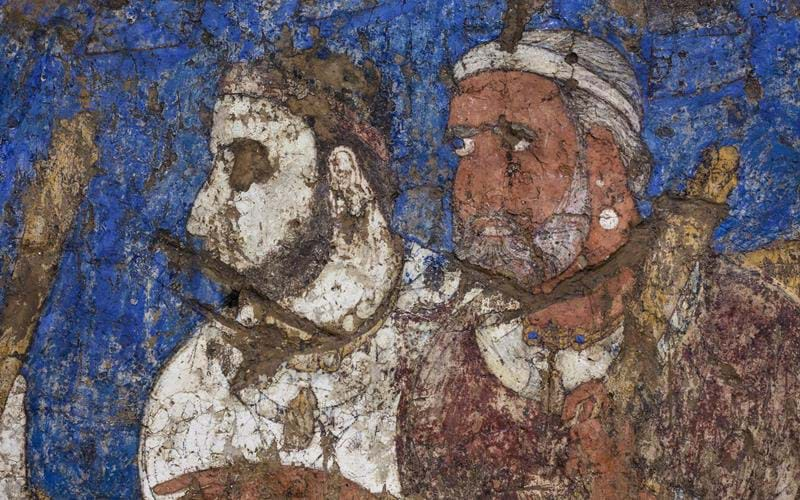
The ruins of Afrosiab sprawl over an expanse of sun-baked wasteland on the northeast side of the city. The site was founded by the Sogdian Dynasty in the 7th century BC and rose to become one of the great trading centres of the Silk Road before its destruction by Genghis Khan in 1220 AD. Although little remains of the city itself, the adjacent museum warrants a visit to see the fabulous 'Ambassador's Painting', a rare survivor from of the Sogdian period painted over two-and-a-half-thousand years ago, yet still vibrant. After lunch, visit Ulugbeg’s extraordinary observatory complex, considered by astronomers as one of the finest of its kind the Islamic world.
Accommodation Options
Tailor-made Tour 15 days from £4995 per person
What's included
✓ International flights from London
✓ 14 nights accommodation
✓ All internal transportation and transfers
✓ English-speaking guides
✓ Breakfast daily
✓ Entrance fees to sites and monuments listed in tour itinerary
Places and Experiences in this tour
Plan your Next Adventure
With the Summer almost upon us, now is the time to begin planning your next summer adventures in Asia. Our Travel Specialists are ready to take your call and discuss the adventure you have been dreaming of.
Or call us on 0208 566 3739












